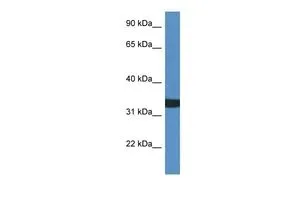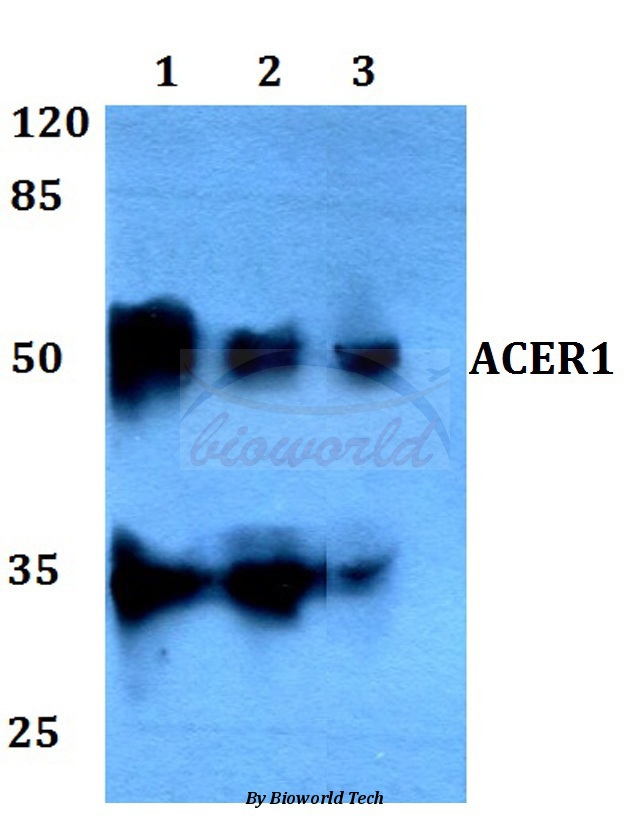
WB analysis of HCT15 cells using GTX48935 ACER1 antibody at 1.0microg/ml.
ACER1 antibody, C-term
GTX48935
ApplicationsWestern Blot
Product group Antibodies
TargetACER1
Overview
- SupplierGeneTex
- Product NameACER1 antibody, C-term
- Delivery Days Customer9
- Application Supplier NoteWB: 0.2-2.5 ug/ml. *Optimal dilutions/concentrations should be determined by the researcher.Not tested in other applications.
- ApplicationsWestern Blot
- CertificationResearch Use Only
- ClonalityPolyclonal
- Concentration0.5-1 mg/ml
- ConjugateUnconjugated
- Gene ID125981
- Target nameACER1
- Target descriptionalkaline ceramidase 1
- Target synonymsALKCDase1, ASAH3, alkaline ceramidase 1, CTB-180A7.3, N-acylsphingosine amidohydrolase (alkaline ceramidase) 3, N-acylsphingosine amidohydrolase 3, acylsphingosine deacylase 3, alkCDase 1, alkaline CDase 1
- HostRabbit
- IsotypeIgG
- Protein IDQ8TDN7
- Protein NameAlkaline ceramidase 1
- Scientific DescriptionCeramides are synthesized during epidermal differentiation and accumulate within the interstices of the stratum corneum, where they represent critical components of the epidermal permeability barrier. Excess cellular ceramide can trigger antimitogenic signals and induce apoptosis, and the ceramide metabolites sphingosine and sphingosine-1-phosphate (S1P) are important bioregulatory molecules. Ceramide hydrolysis in the nucleated cell layers regulates keratinocyte proliferation and apoptosis in response to external stress. Ceramide hydrolysis also occurs at the stratum corneum, releasing free sphingoid base that functions as an endogenous antimicrobial agent. ACER1 is highly expressed in epidermis and catalyzes the hydrolysis of very long chain ceramides to generate sphingosine (Houben et al., 2006 [PubMed 16477081]; Sun et al., 2008 [PubMed 17713573]).[supplied by OMIM, Jul 2010]
- Storage Instruction-20°C or -80°C,2°C to 8°C
- UNSPSC12352203




